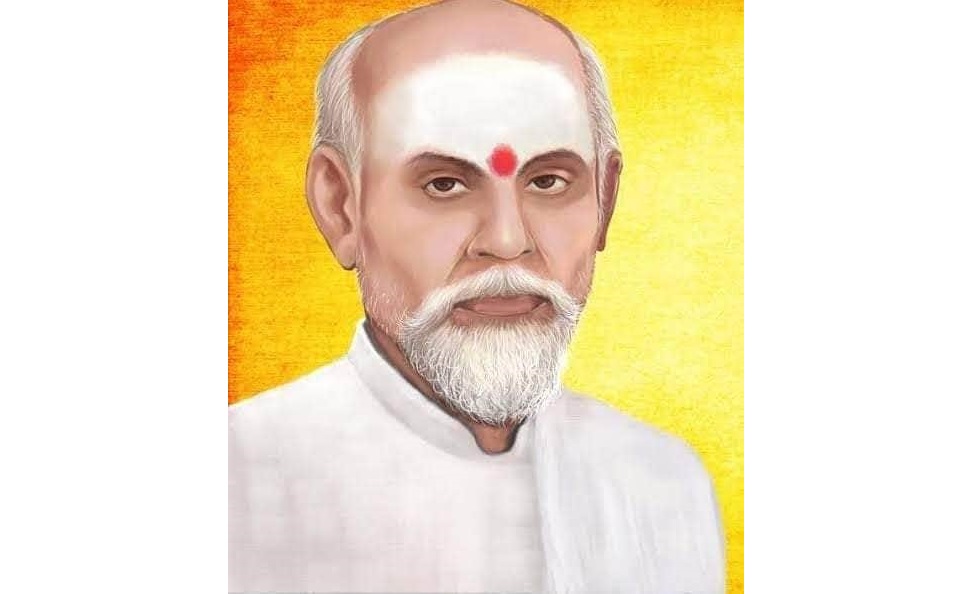Many leaders have sacrificed their lives for liberating India from the clutches of the British. Only a few of them have found a place in today’s history books. A few others have been lost to time as we failed to celebrate them.
Lot of us know Mahakavi Subramania Bharathiyar. When the firebrand nationalist Tamil poet died too soon at 38, the British government had imposed a ban on writing any form of obituary in magazines or participate in the funeral rites of the poet. But there was one man who wrote a 16 line elegy for the Mahakavi which was published in Swadesamitran and was also one of the few who went for the funeral of Bharathiyar. He was Salem Kavisingam Rajarishi Su. Arthanareesa Varma.
Early life
Rajarishi Arthanareesa Varma was born to Sugavanam and Lakshmi on 27th June, 1874 at Sugavanapuri near Salem. He completed his education in Gurukul format from Thiruppoonthuruthy Mutt near Thanjavur and gained proficiency in Tamil, Sanskrit and English. He started as manager at the Salem Sudeshabhimani printing press in 1911.
Inspired by Bharati’s poetry at the time, he dedicated himself to the freedom struggle. He also wrote and published poems and commented on India’s plight under the British rule.
Starting of ‘Kshatriyan’
At that time, there were many secret societies operating across the country against the British. Arthanareesa Varma and his friend Kovai Boopathy Pazhaniappa were part of one such society.
Boopathy Pazhaniappa wanted to start a magazine to rouse a feeling of nationalism among the Tamil populace. But he died before his efforts began to take shape. Following his friend’s death, Arthanareesa Varma started the Kshatriyan magazine in 1923 with P. Manikkam Pillai as the publisher. But he could not continue with it for more than three years.
Stint at ‘Veerabharathi’
Shortly later, Arthanareesa Varma became the editor of Veerabharathi in 1931 which was supported by the Indian National Congress. In the aftermath of the hanging of Bhagat Singh, Sukhdev and Rajguru, many revolutionaries were plotting against British officials. Arthanareesa Varma covertly spread the message through the Veerabharathi newspaper. Harikrishnan who was hanged for the assassination attempt on Governor of Punjab was praised in Veerabharathi. Dinesh Gupta who was hanged for killing the infamous Col NS Simpson, the Inspector General of Police known for his brutal oppression was also praised in Veerabharathi. Another revolutionary named Kanailal Bhattacharjee who killed the judge of Alipore court for hanging Dinesh Gupta was also praised by Varma.
Articles from Veerabharathi were translated in English and read out in the Parliament. Irked and shocked, the British government accused Veerabharathi of supporting murderers and banned the paper by slapping the Press Act (Emergency Powers) on it. Veerabharathi remains the only Tamil magazine banned by the British Parliament.
Varma brought back the Kshatriya magazine in 1931 with the proceeds from Veerabharati. However it did not last long. He wanted to bring Veerabharathi which was published thrice a week as a daily. But he could not hold after 64 issues.
Apart from Kshatriyan and Veerabharathi, he ran many other magazines like Kshatriya Sigaamani, Suryodayam (Puducherry) and Thamizh Mannan. He has also authored more than 15 books – Cheramaan Perumal Nayanar Saritham (1909), Mudhalam Karikal Chozhan (1913), Saras Smrithi Moolamum Uraiyum (1923), Bhagavad Gita Vilasam, Jaadhi Thatthuva Nirubanam, Lokantharam, Jeevanum Eesanum, Vidhi Madhi Vilakkam, Sri Vanni Vamsa Prakasikai (1912), Sri Vanni Kulothkar Deepikai, Sambuvarayar Varalaru, Saanaar Sarithiram, Vanniyar Ena Vazhangum Tamizh Nadu Kshatriya Manavar Illa Naan Mani Maalai, Sanga Kaaviyam (1940), Azhaga Nandhar Anbu Yathirai, Thiruvarunaipadhi Annamalaiyaar Aalaya Madhirchuvar Kudi Konda Kotthala Pillayar Padhigam, Thammanampatti Thiruvarulai Saiva Madalaya Prabandhangal to name a few.
A fierce nationalist
He started the Kazhatritrarivaar Sabha through which he mobilized and trained youth on various skills. He revered Mahatma Gandhi as God and wore Khadi throughout his life. When Gandhi visited Thiruvannamalai on 17th February, 1934, he was honoured by Arthanareesa Varma who presented Gandhi with a certificate of appreciation on behalf of the people of Thiruvannamalai.
Varma was also well versed in Siddha medicine and wrote about it in his Tamizh Mannan magazine. He was a staunch advocate of banning liquor. He released a book called Madhuvilakku Sindhu that propagated ideas of liquor ban. He even organized a rally to ban liquor by mobilizing people from 300 villages in Salem. Inspired by Varma’s efforts, Rajaji tried to implement the ban on liquor in Salem.
Varma along with his wife went village after village spreading the feeling of nationalism and freedom. He spent his last days at Thiruvannamalai and passed away on 17th December 1964 at the age of 90. His friend Rajaji wrote a laudatory article in Kalki magazine compiling and praising his work.
Arthanareesa Varma today
The man who ran the only Tamil magazine that was banned by the British Parliament, the man who was the only person to have written an elegy for Mahakavi Subramania Bharathiyar at that time, the man who instilled the feeling of nationalism among the Tamil masses, the man who ought to be celebrated as a national hero has been reduced to a caste leader by Dravidian groups and remains unknown to most of the Tamil people. In a rally held in Vellore in the year 1920, Thiruvarur Viruttachala Kalyanasundaram (popularly known as Thiru. Vi. Ka) hailed Arthanareesa Varma as a poet akin to Subramania Bharathi. Today there is nothing but a small structure (a Samadhi) in remembrance of him at Thiruvannamalai. Not even a memorial has been built to honour the contribution of this great freedom fighter from the Tamil land.

